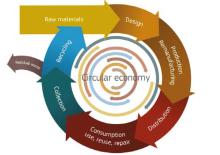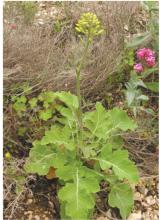
In 2011 the European commission has developed three key documents, which will have strong implications for the aggregates industry and that UEPG will closely monitor
On raw materials, the communication, Tackling the Challenges in Commodity Markets and on Raw Materials, published in February, was followed by a
Members adopted paragraph 15 believing that a tax on mineral resources is not an adequate fiscal tool for increasing resource efficiency. They also called on the
UEPG welcomed the first part of this paragraph, convinced that taxation on mineral resources is not an inappropriate tool for increasing resource efficiency. It drew attention to the many studies already available on resource taxation and broader market-based instruments, considering that resource efficiency is best achieved through technical best practices and recycling.
Biodiversity
The communication Our Life Insurance, Our Natural Capital: an EU Biodiversity Strategy to 2020, published in May, sets priority targets, some of which are or might be relevant to the aggregates industry.
Fully implement the birds and habitats directives. Further integration of species and habitats protection and management requirements into key land and water use policies, both within and beyond the Natura 2000 areas.
Maintain and restore ecosystems and their services. The EC will develop a Green Infrastructure Strategy by 2012 and carry out further work with a view to proposing by 2015 an initiative to ensure there is no net loss of ecosystems and their services.
Combat invasive alien species. A dedicated EU legislative instrument is expected in 2012.
Partnerships for biodiversity are also mentioned. The EC will further develop the EU Business and Biodiversity Platform.
Resource efficiency
A resource-efficient Europe, one of seven flagship initiatives as part of the Europe 2020 Strategy, aims to deliver smart, sustainable and inclusive growth. In January, 2011, the EC published the communication on a Resource-Efficient Europe. The overall target is that by 2050 all resources are sustainably managed, including raw materials, energy, water, air, land and soil.
The Roadmap on A Resource-Efficient Europe, published in September, states that the specific risks of minerals including security of supply are already addressed in the EU Raw Materials Strategy.
The Roadmap tackles a number of key issues:
Market-based instruments: The Roadmap states the need to address markets and prices, taxes and subsidies that do not reflect the real costs of resource use. The philosophy is to shift taxation away from labour and to increase the share of environmental taxes.
Indicators: In 2012, the EC will establish a common methodological approach to enable Member States and the private sector to assess, display and benchmark the environmental performance of products, services and companies based on a comprehensive assessment of environmental impacts over the life-cycle (environmental footprint).
Recycling: In 2012 the EC will expand the scope of the Ecodesign directive to non-energy related products, while in 2013-14 it will stimulate the secondary materials market and demand for recycled materials through economic incentives, develop end-of-waste criteria and assess areas where legislation on the various waste streams could be aligned to improve coherence.
Ecosystem services and biodiversity: The EC will promote the use of innovative financial and market-based instruments and explore their wider potential, including a possible establishment of a biodiversity financing facility and payments for ecosystems services, in particular in cooperation with the European Investment Bank and through Public Private Partnerships. It will put forward proposals to foster investments in natural capital, and will issue a communication on Green Infrastructure in 2012 and a No Net Loss initiative in 2015.
Member States should map the state of ecosystems and their services by 2014 and assess their economic value, and promote the integration of these values into accounting and reporting systems at EU and national level, and should work with key stakeholders to encourage businesses to assess their dependency on ecosystem services building on the EU Business@Biodiversity Platform.
Water, air, land and soil: A blueprint to safeguard Europe’s water will define a strategy to address this specific topic. The Groundwater Directive will be reviewed in 2012, and the EC will undertake a comprehensive review of all EU air pollution policies by 2013.
Land use and soil are linked together, and the EC will further develop the scientific knowledge-base on biotic material, land use effects and trends, and spatial planning, including broader resource efficiency considerations in the review of the Environmental Impact Assessment (EIA) Directive in 2012.
Member States should limit land take and soil sealing to the extent possible, and a communication on land use should be developed by 2014.
Marine resources
The EC will contribute to safeguarding natural coastal and marine capital by proposing policy measures on management and planning in 2012, and establish an extensive network of protected areas by 2020. There should also be a 7th Environmental Action Plan in 2012, the International Year of Water.







